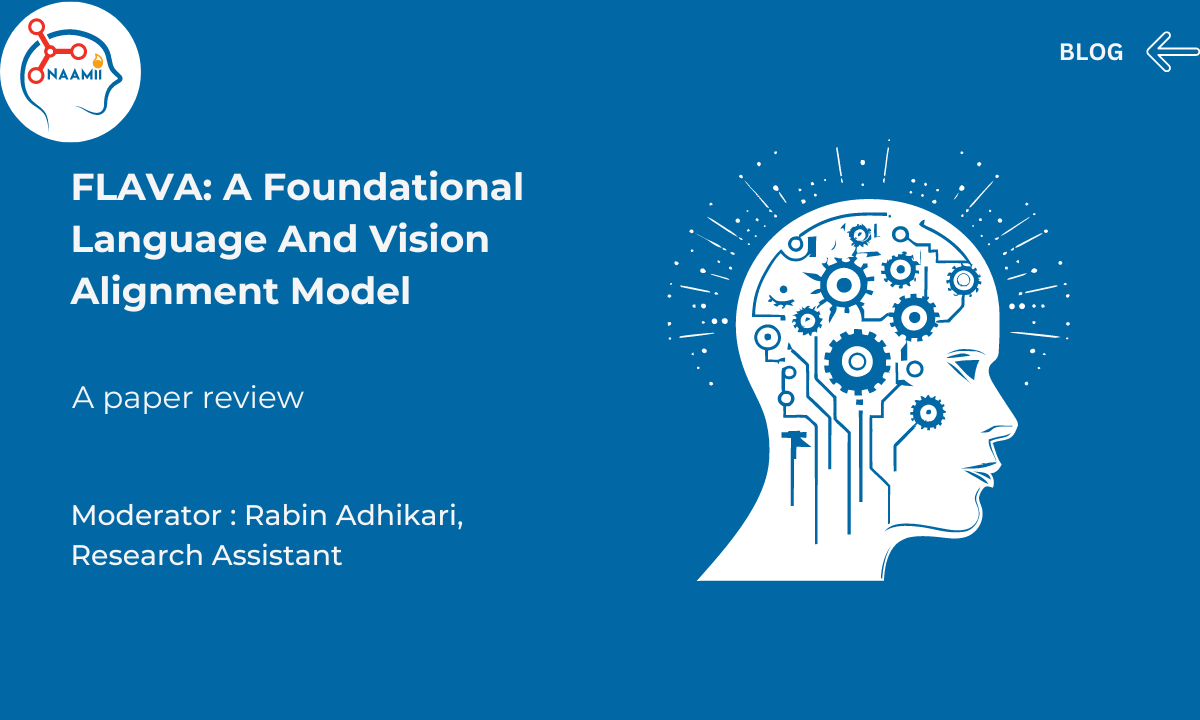
A paper review on “FLAVA: A Foundational Language And Vision Alignment Model”
- Post by: Naamii
- March 18, 2024
- No Comment
Co-authors and Affiliations: The paper is co-authored by Amanpreet Singh, Ronghang Hu, Vedanuj Goswami, Guillaume Couairon, Wojciech Galuba, Marcus Rohrbach, and Douwe Kiela, all affiliated with Facebook AI Research (FAIR).
Link to the Original Paper: You can read the full paper here.
Summary of the Research: FLAVA represents a significant advancement in AI research, aiming to create a universal model that excels in vision, language, and multimodal tasks. It leverages large-scale visio-linguistic pretraining to achieve impressive performance across various tasks. This model’s significance lies in its ability to understand and process visual and textual information, paving the way for more intuitive and versatile AI systems.
Problem Statement: The paper addresses the need for a holistic model that simultaneously handles vision, language, and their combination. Existing models often focus on specific modalities or tasks, leaving a gap for a universal model that performs well across all vision and language domains.
Methodology: FLAVA is designed as a transformer model that learns from unimodal (images or text alone) and multimodal (image-text pairs) data. It incorporates cross-modal alignment objectives and multimodal pretraining to build strong representations for various tasks.
Conclusions and Differentiating Factors: The research concludes that FLAVA achieves state-of-the-art performance on 35 tasks, demonstrating its versatility as a foundation model. Its differentiating factor is the ability to perform equally well in unimodal and multimodal tasks, unlike other models specializing in one or the other.
Moderator’s Note: The FLAVA model is a testament to the power of integrating different AI domains. Its methodology is a blueprint for future research aiming to create AI systems with a more comprehensive understanding of the world. The paper’s clear structure and innovative approach make it a valuable contribution to the field. I find the potential applications of FLAVA in real-world scenarios, such as improved virtual assistants and advanced image-text search engines, particularly exciting.
About the moderator: The moderator for this paper was Rabin Adhikari, a research assistant at NAAMII.
References